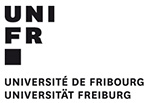Department Environmental Chemistry
CyanoBloom

Why do toxic cyanobacteria bloom? A gene to ecosystem approach.
This project aims to understand the ecological and evolutionary mechanisms triggering harmful cyanobacterial blooms (cyanoHABs) in lake ecosystems, and develop predictive models. We propose a synchronised and synergistic research effort by an interdisciplinary team of experts in ecology, microbiology, environmental chemistry, and dynamical systems theory, to address several central questions about the mechanisms triggering cyanoHABs. We integrate a suite of field observations, experiments, and models (data-driven and mechanistic) to capture the temporal and biological scales of processes leading to the emergence of cyanoHABs. We focus on the interaction between physiological, ecological and evolutionary mechanisms, and the relative costs and benefits that cyanoHAB taxa have from producing non-ribosomal peptides (NRPs) in a community context and over natural environmental gradients.
More information and updates on: www.cyanobloom.ch

Reserach Groups involved:
Elisabeth Janssen: Environmental Chemistry of Biomolecules
David Johnson: Synthetic Microbial Biology
Rudolf Rohr: Theoretical Ecology and Evolution
Francesco Pomati: Plankton Ecology


